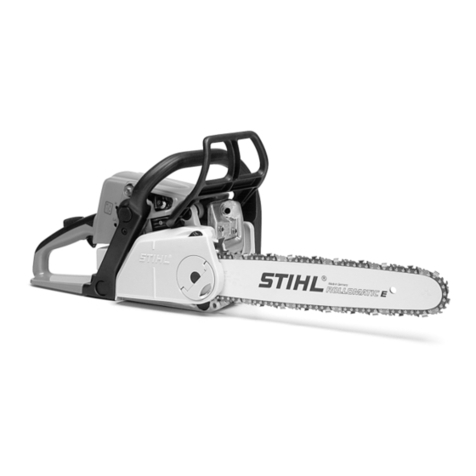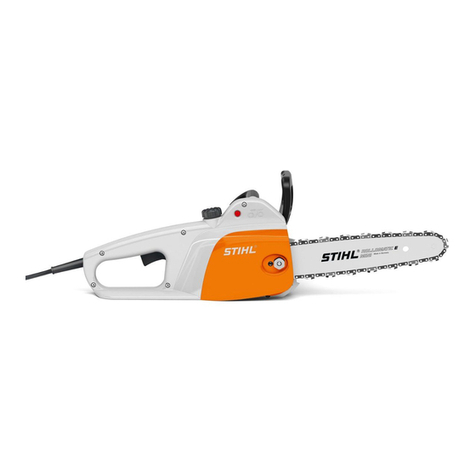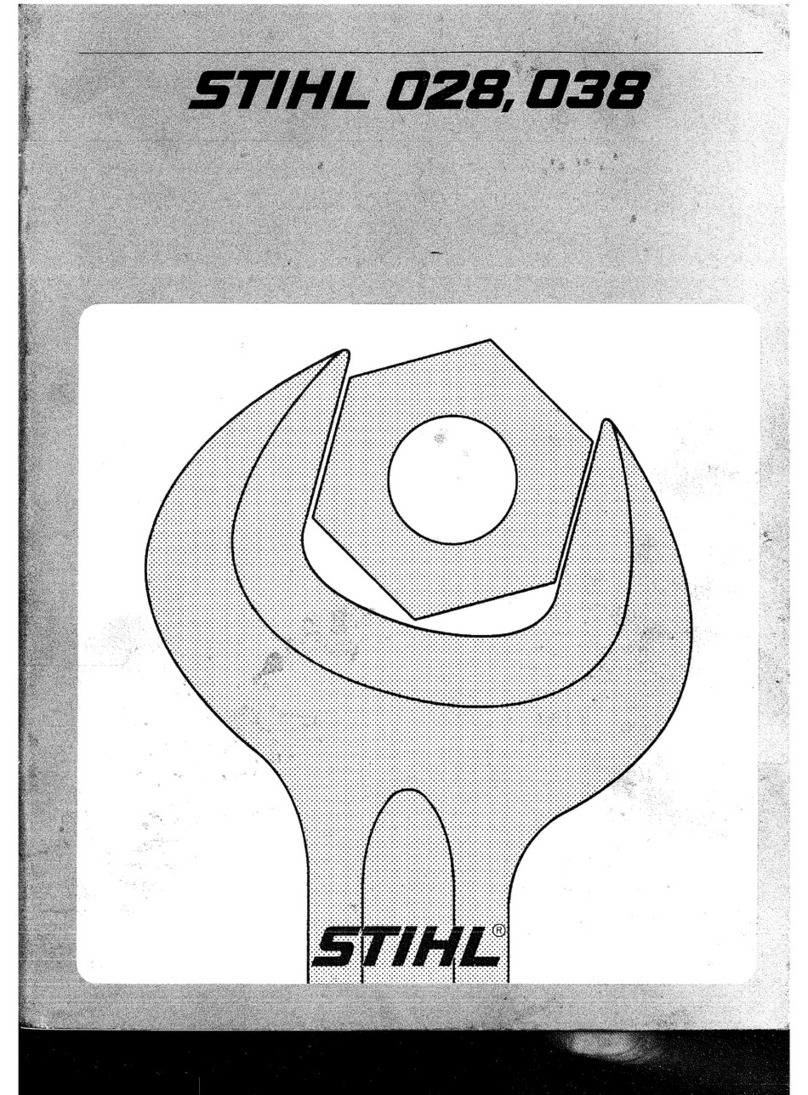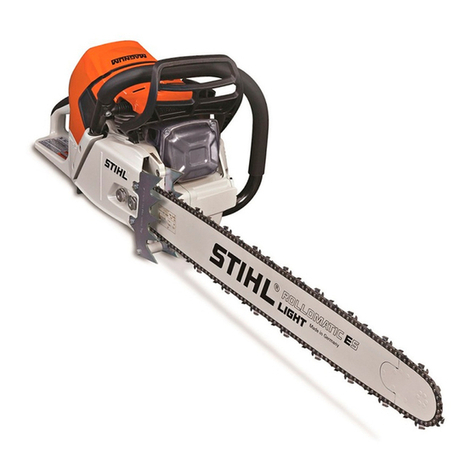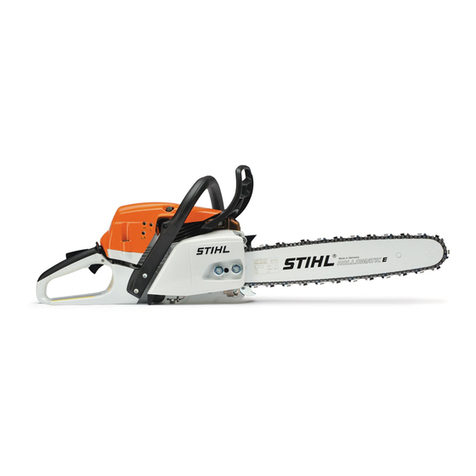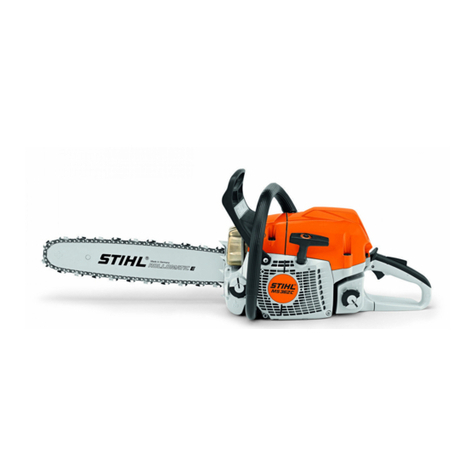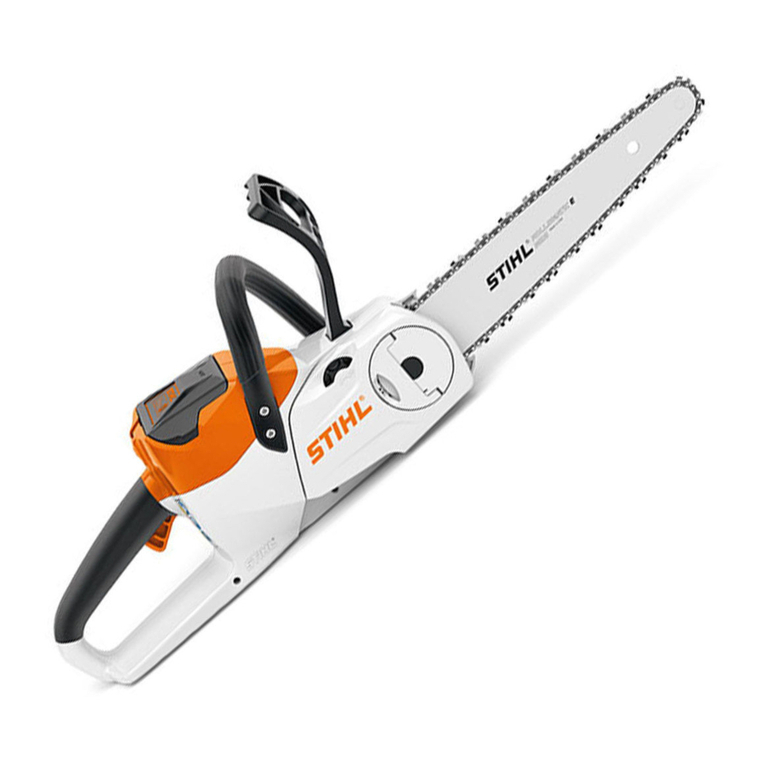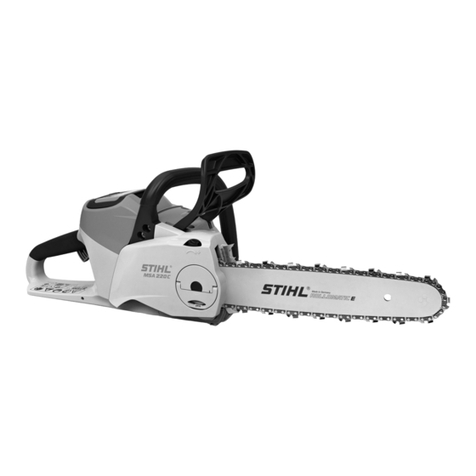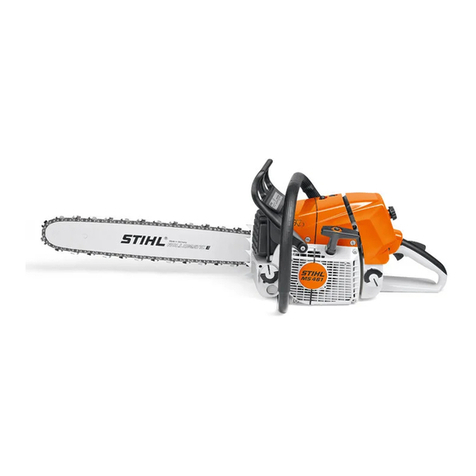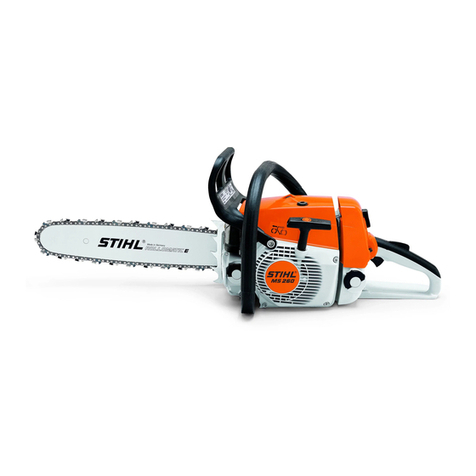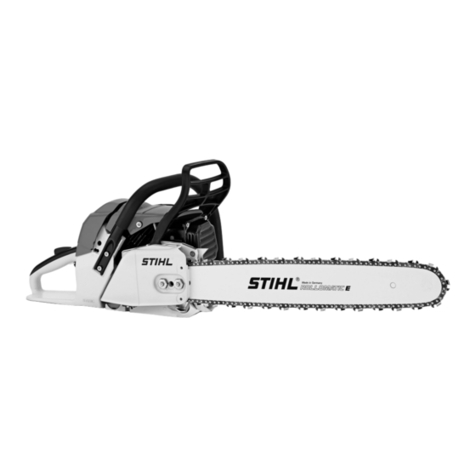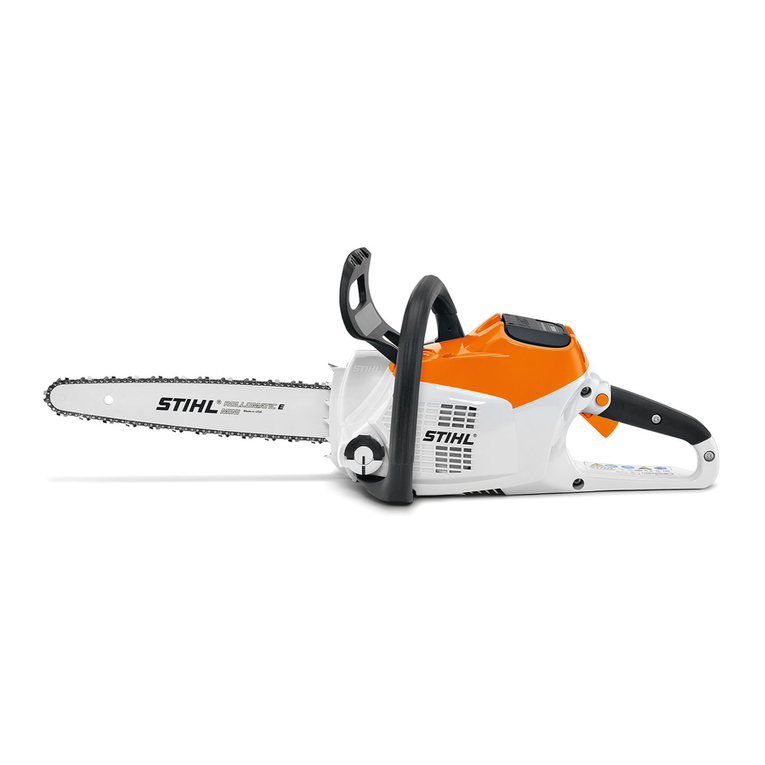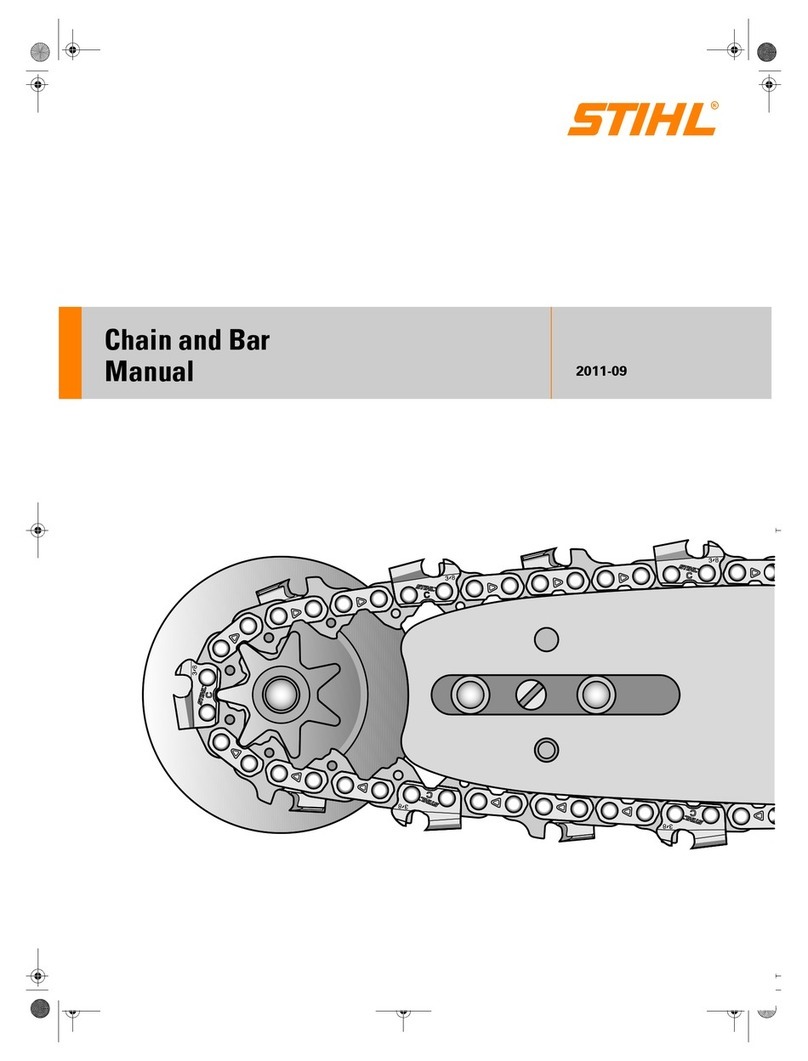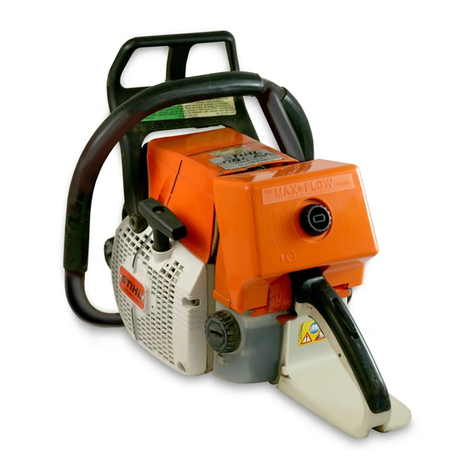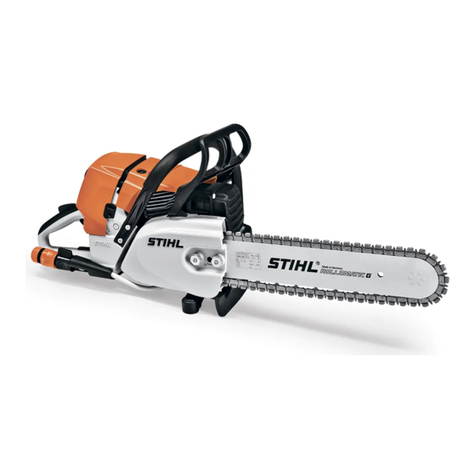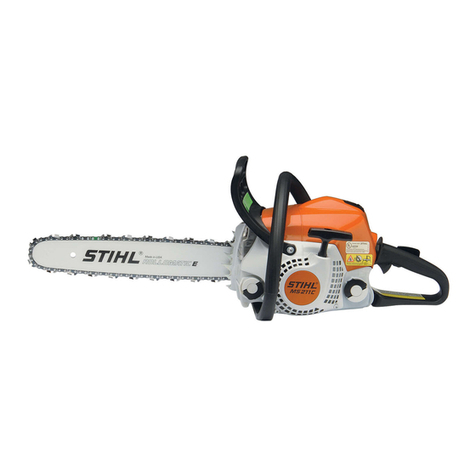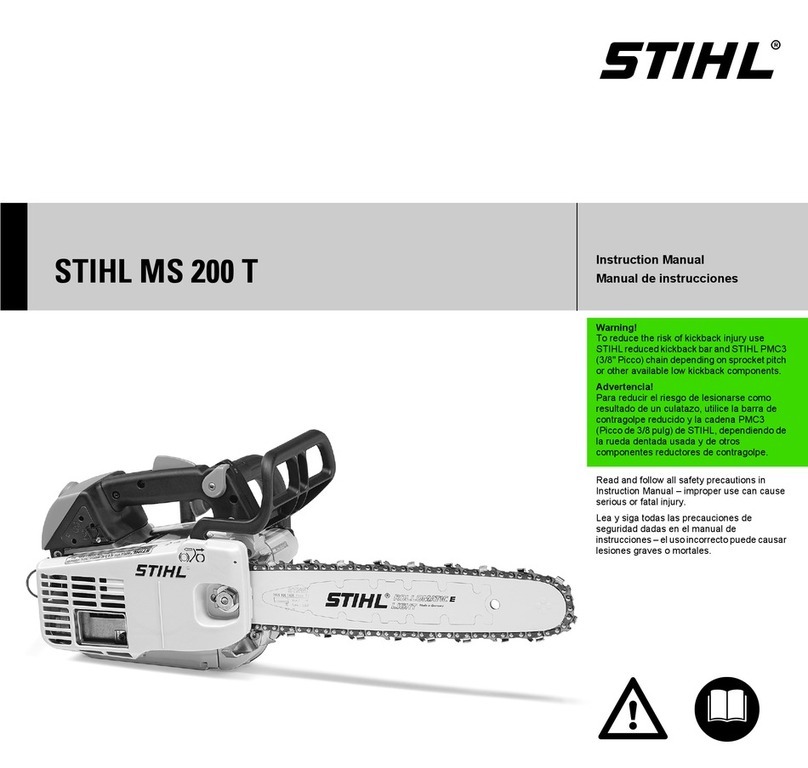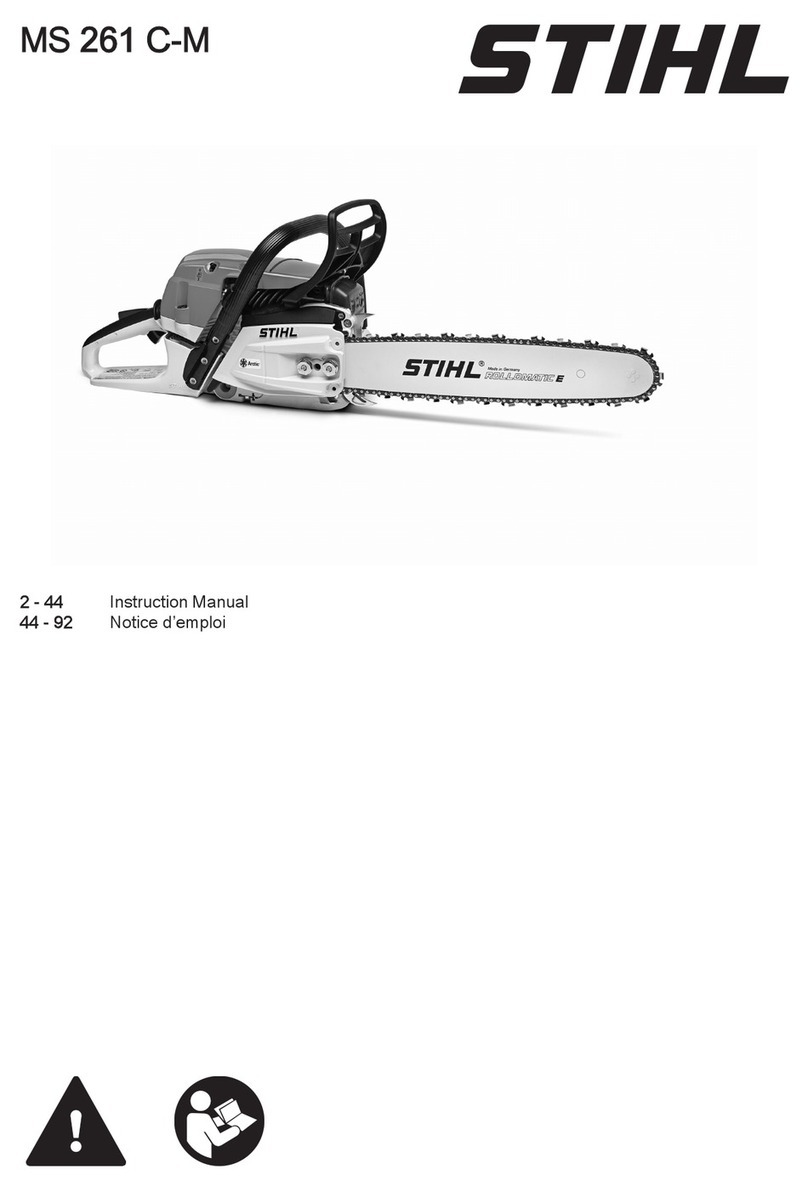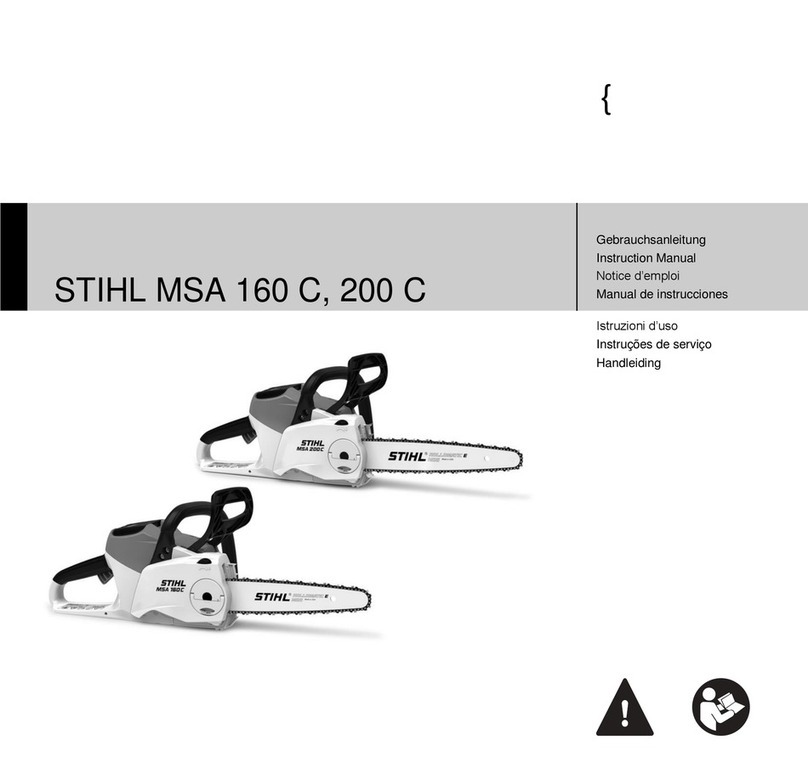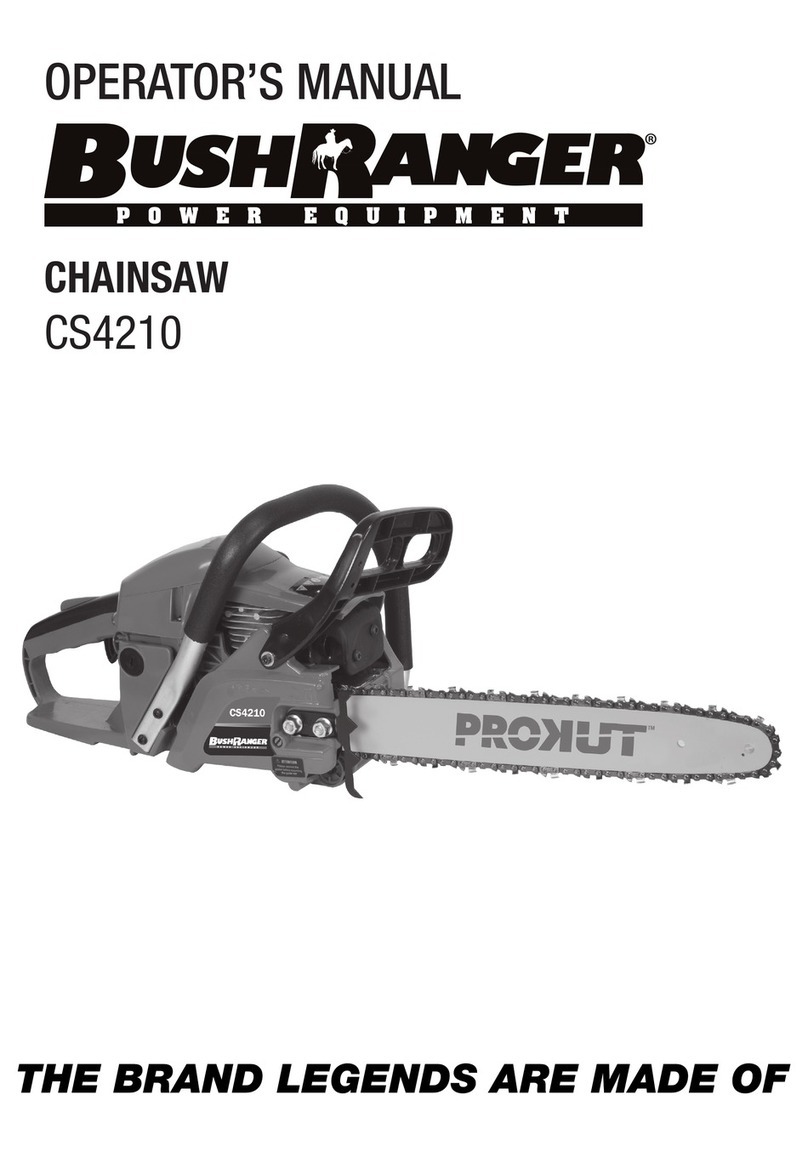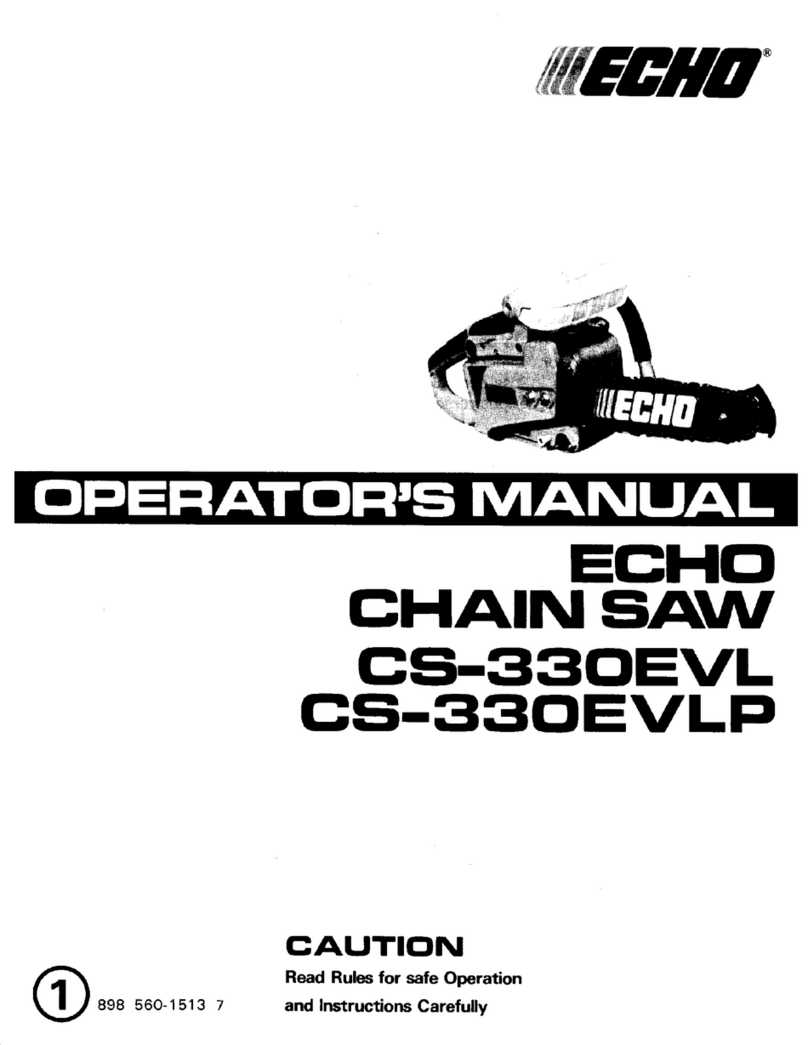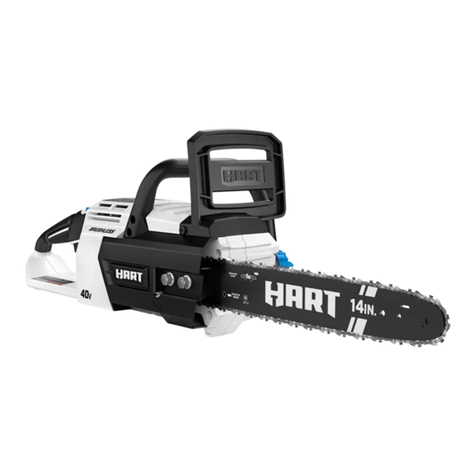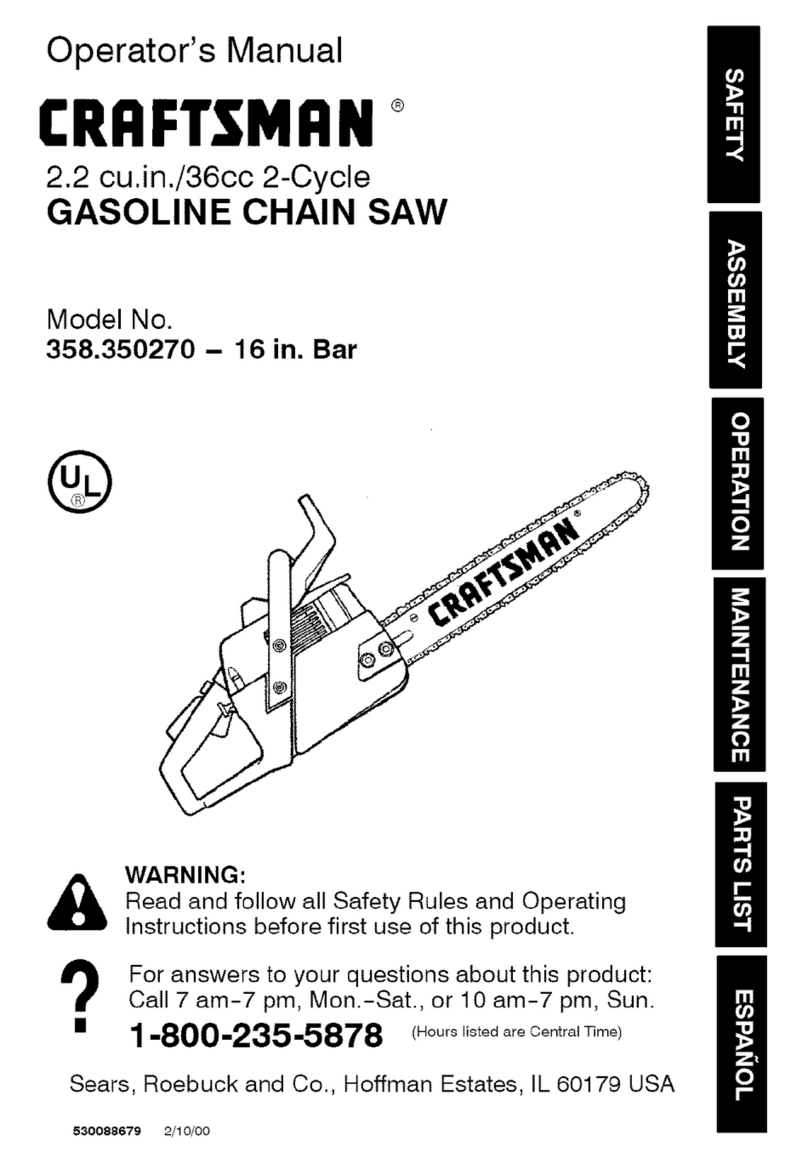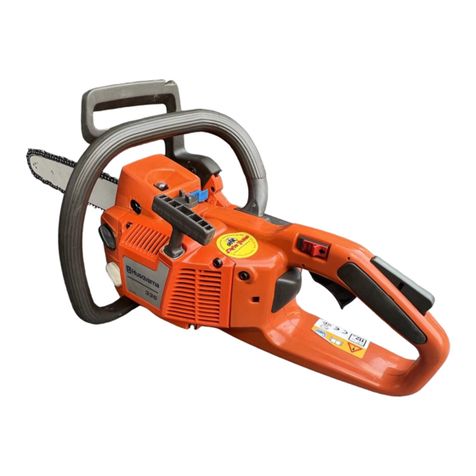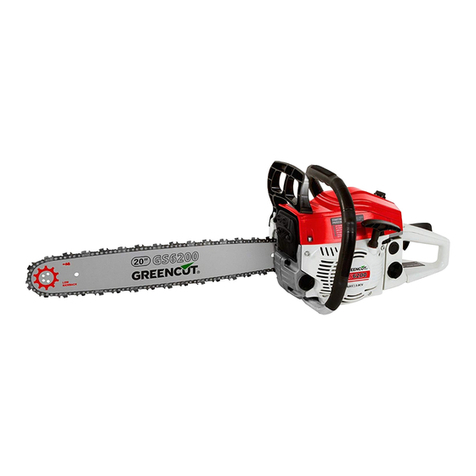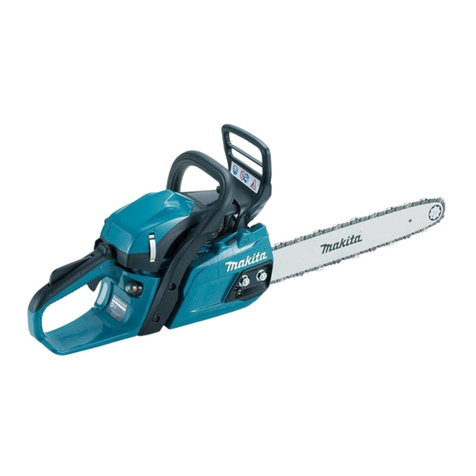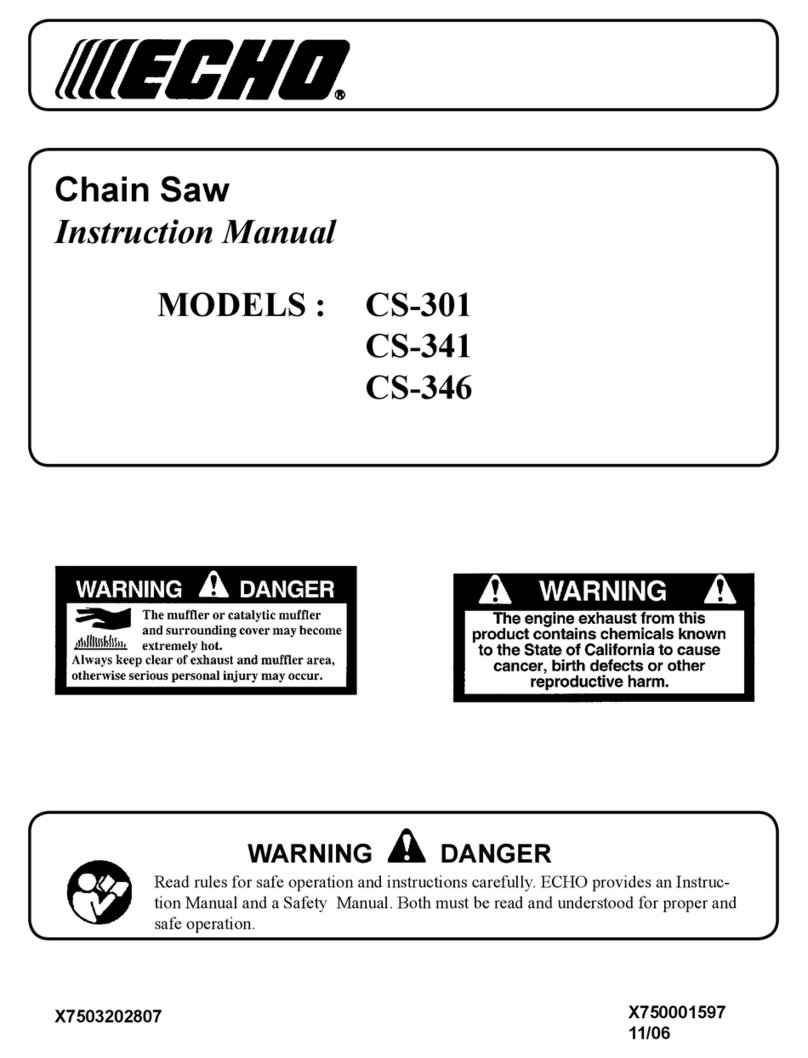
Original Instruction ManualPrinted on chlorine-free paper
Printing inks contain vegetable oils, paper can be recycled.
© ANDREAS STIHL AG & Co. KG 2019
0458-791-8221-C. VA0.B19.
0000008744_001_GB
0458-791-8221-C
English
1
This instruction manual is protected by copyright. All rights reserved, especially the rights to reproduce, translate and process
with electronic systems.
Contents
1 Introduction
. . . . . . . . . . . . . . . . . . . . . . . . . . . . . . . . . . . . . . . . .
2
2 Guide to Using this Manual
. . . . . . . . . . . . . . . . . . . . . . . . . .
3
2.1 Signal Words
. . . . . . . . . . . . . . . . . . . . . . . . . . . . . . . . . . . . . . . .
3
2.2 Symbols in Text
. . . . . . . . . . . . . . . . . . . . . . . . . . . . . . . . . . . . .
3
3 Main Parts
. . . . . . . . . . . . . . . . . . . . . . . . . . . . . . . . . . . . . . . . . .
3
3.1 Chain Saw and Battery
. . . . . . . . . . . . . . . . . . . . . . . . . . . . . .
3
4 Safety Symbols on the Products
. . . . . . . . . . . . . . . . . . . . .
4
4.1 Chain Saw
. . . . . . . . . . . . . . . . . . . . . . . . . . . . . . . . . . . . . . . . . .
4
4.2 Battery
. . . . . . . . . . . . . . . . . . . . . . . . . . . . . . . . . . . . . . . . . . . . . .
5
5 IMPORTANT SAFETY INSTRUCTIONS
. . . . . . . . . . . . .
5
5.1 Intended Use
. . . . . . . . . . . . . . . . . . . . . . . . . . . . . . . . . . . . . . . .
5
5.2 Operator
. . . . . . . . . . . . . . . . . . . . . . . . . . . . . . . . . . . . . . . . . . . .
6
5.3 Personal Protective Equipment
. . . . . . . . . . . . . . . . . . . . . .
7
5.4 Chain Saw
. . . . . . . . . . . . . . . . . . . . . . . . . . . . . . . . . . . . . . . . . .
8
5.5 Using the Chain Saw
. . . . . . . . . . . . . . . . . . . . . . . . . . . . . . . .
9
6 Kickback and Other Reactive Forces
. . . . . . . . . . . . . . .
15
6.1 Reactive Forces
. . . . . . . . . . . . . . . . . . . . . . . . . . . . . . . . . . . .
15
6.2 Kickback
. . . . . . . . . . . . . . . . . . . . . . . . . . . . . . . . . . . . . . . . . . .
15
6.3 Pull-in
. . . . . . . . . . . . . . . . . . . . . . . . . . . . . . . . . . . . . . . . . . . . . .
20
6.4 Pushback
. . . . . . . . . . . . . . . . . . . . . . . . . . . . . . . . . . . . . . . . . .
20
7 Proper Techniques for Pruning
. . . . . . . . . . . . . . . . . . . . .
21
7.1 Intended Uses
. . . . . . . . . . . . . . . . . . . . . . . . . . . . . . . . . . . . . .
21
7.2 Pruning
. . . . . . . . . . . . . . . . . . . . . . . . . . . . . . . . . . . . . . . . . . . .
21
7.3 Cutting Logs Under Tension
. . . . . . . . . . . . . . . . . . . . . . . .
22
8 Battery Safety
. . . . . . . . . . . . . . . . . . . . . . . . . . . . . . . . . . . . . .
22
8.1 Warnings and Instructions
. . . . . . . . . . . . . . . . . . . . . . . . . .
22
9 Maintenance, Repair and Storage
. . . . . . . . . . . . . . . . . .
24
9.1 Warnings and Instructions
. . . . . . . . . . . . . . . . . . . . . . . . . .
24
10 Before Starting Work
. . . . . . . . . . . . . . . . . . . . . . . . . . . . . . .
25
10.1 Preparing the Chain Saw for Operation
. . . . . . . . . . . . .
25
11 Charging the Battery
. . . . . . . . . . . . . . . . . . . . . . . . . . . . . . .
25
11.1 Setting up the Charger
. . . . . . . . . . . . . . . . . . . . . . . . . . . . .
25
11.2 Charging
. . . . . . . . . . . . . . . . . . . . . . . . . . . . . . . . . . . . . . . . . . .
26
12 LED Diagnostics and Acoustic Signals
. . . . . . . . . . . . .
27
12.1 STIHL AP Battery
. . . . . . . . . . . . . . . . . . . . . . . . . . . . . . . . . .
27
12.2 STIHL AR Backpack Battery
. . . . . . . . . . . . . . . . . . . . . . .
28
13 STIHL AR Backpack Battery
. . . . . . . . . . . . . . . . . . . . . . .
29
13.1 Positioning and Adjusting the Connecting Cord
. . . . .
29
13.2 Putting on and Adjusting the Harness
. . . . . . . . . . . . . .
30
14 Assembling the Chain Saw
. . . . . . . . . . . . . . . . . . . . . . . . .
31
14.1 Cutting Attachment
. . . . . . . . . . . . . . . . . . . . . . . . . . . . . . . .
31
14.2 Mounting and Removing the Guide Bar and
Chain
. . . . . . . . . . . . . . . . . . . . . . . . . . . . . . . . . . . . . . . . . . . . . .
31
14.3 Tensioning the Chain
. . . . . . . . . . . . . . . . . . . . . . . . . . . . . .
33
14.4 Lubricating the Saw Chain and Guide Bar
. . . . . . . . . .
34
15 The Chain Brake
. . . . . . . . . . . . . . . . . . . . . . . . . . . . . . . . . . .
35
15.1 Engaging the Chain Brake
. . . . . . . . . . . . . . . . . . . . . . . . .
35
15.2 Disengaging the Chain Brake
. . . . . . . . . . . . . . . . . . . . . .
35
15.3 Maintaining the Chain Brake
. . . . . . . . . . . . . . . . . . . . . . .
36
16 Inserting and Removing the Battery
. . . . . . . . . . . . . . . .
36
16.1 Inserting the Battery
. . . . . . . . . . . . . . . . . . . . . . . . . . . . . . .
36
16.2 Removing the Battery
. . . . . . . . . . . . . . . . . . . . . . . . . . . . . .
37
17 Switching the Chain Saw On and Off
. . . . . . . . . . . . . . .
37
17.1 Switching On
. . . . . . . . . . . . . . . . . . . . . . . . . . . . . . . . . . . . . .
37
17.2 Switching Off
. . . . . . . . . . . . . . . . . . . . . . . . . . . . . . . . . . . . . .
38
18 Checking the Chain Saw
. . . . . . . . . . . . . . . . . . . . . . . . . . .
38
18.1 Checking the Operation of the Chain Brake
. . . . . . . .
38
18.2 Testing the Controls
. . . . . . . . . . . . . . . . . . . . . . . . . . . . . . .
38
18.3 Testing Chain Lubrication
. . . . . . . . . . . . . . . . . . . . . . . . . .
39
19 After Finishing Work
. . . . . . . . . . . . . . . . . . . . . . . . . . . . . . .
39
19.1 Preparing for Transportation or Storage
. . . . . . . . . . . .
39
20 Transporting the Chain Saw and Battery
. . . . . . . . . . .
40
20.1 Chain Saw
. . . . . . . . . . . . . . . . . . . . . . . . . . . . . . . . . . . . . . . . .
40
20.2 Battery
. . . . . . . . . . . . . . . . . . . . . . . . . . . . . . . . . . . . . . . . . . . . .
40
21 Storing the Chain Saw and Battery
. . . . . . . . . . . . . . . . .
41
